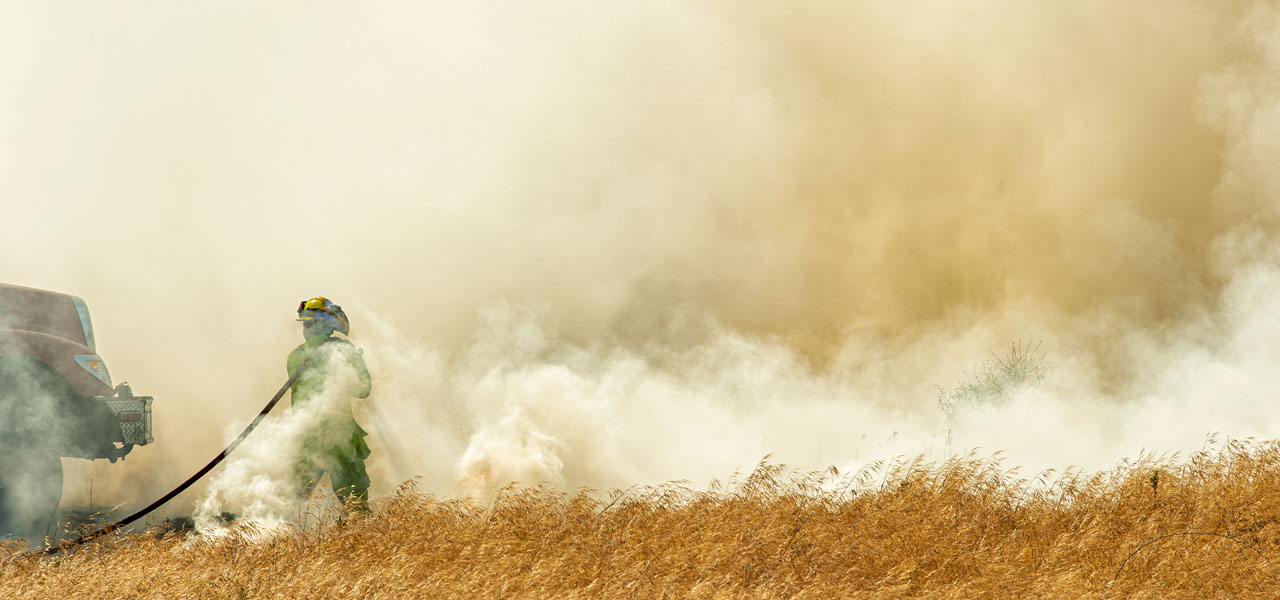There are few things more devastating to a farmer’s livelihood and operations than a runaway fire. With the on-going drought, the threat is more real than ever, which is why we recommend that you assist agriculture clients in truly understanding their risk and liability.
Affect of the drought
The drought has left many hectares of grazing land extremely dry, increasing the risk of fire. Veld grasses did not grow as fast or as thick as usual, which means that fires spread faster than usual. The South African Weather Service has warned farmers to expect high fire danger conditions over many parts of the country, which poses considerable risks to property, livestock, crops and the natural environment. Agri Western Cape – one of the regions often hit the hardest by fires – noted that the destruction of vineyards, orchards, and agriculture infrastructure worth millions of rand could have a ripple effect on the country's entire economy.
Understanding risk and liability
Double-check with your agriculture clients that their current cover includes additional protection against fire, as most agricultural insurance policies exclude the legal liability for the spread of fire. Farmers must make sure that they specifically request cover for fire spreading – in particular if they live near plantations, sugar cane or vineyards.
Help your clients understand that fire insurance is not one-size-fits-all. They will need insurance against fire damage to crops, assets as well as natural rangeland and pastures. A farmer’s own property (buildings, shed, etc.) will be covered under ‘material damage’ however they must also ensure they have cover where the fire spreads from their land onto neighbouring property. Work with clients to get an accurate assessment of the replacement costs of buildings, contents, vehicles and other lost goods.
How farmers can be more fire-smart
Along with updating their cover and assessing their risk, you can share these tips on how farmers can be more prepared to deal with fires:
- Learning to recognise the weather conditions associated with high fire danger: temperature, wind speed/direction and humidity.
- Owners of thatched houses must take all necessary precautions such as installing drenchers, using fire blankets and having fire extinguishers to hand.
- Using technology: satellite-based fire information tools such AFIS provides real-time fire information.
- Investing in their own well-maintained fire fighting equipment (such as a petrol/diesel-powered water pump).
- Creating a veld fire plan, covering the eventualities of both staying and defending their property or leaving it ahead of the veld fire.
- Restricting the use of farm machinery on days when the fire danger is high.
- Being extra careful when using welding, cutting and grinding equipment.
- Establishing firebreaks between their land and roads or railways.
- Training staff in firefighting techniques and safety standards for smoking, burning rubbish, etc.
- Joining a Fire Protection Association: Santam will reward clients who are members of FPAs with discounted rates as well as premium and excess incentives.
Santam’s Agri spread-of-fire cover
Santam offers an extension under the Fire section of its Agri insurance, which gives cover for fire extinguishing costs when the insured’s own property is threatened by fire – including air water bombing. Under the Public Liability section of the Santam Agri policy, clients are also covered for damages should they become legally liable for a fire that starts on their property and then spreads to neighbouring farms causing damage.
In an effort to minimise such damage, the farmer may incur great expenses to extinguish the fire/s.
The new Fire extinguishing charges clause under the Public Liability section of the Agriculture policy will indemnify the Insured for all reasonable fire extinguishing costs and expenses which the Insured becomes legally liable to pay as a result of the extinguishing or fighting of fire (including water-bombing by air) to prevent the spreading of such fire beyond the borders of the Insured's own premises.
Get in touch with your relationship manager or contact us if you have any queries about Santam products. Find more articles on agricultural risk here, or read more about how clients can stay safe during fire season in South Africa.
